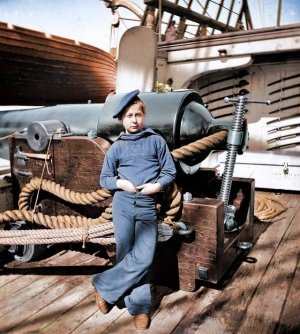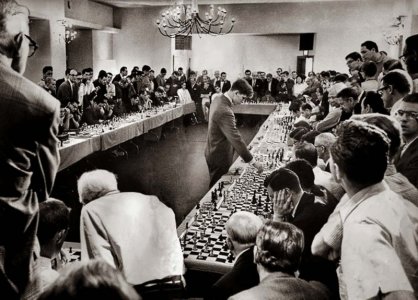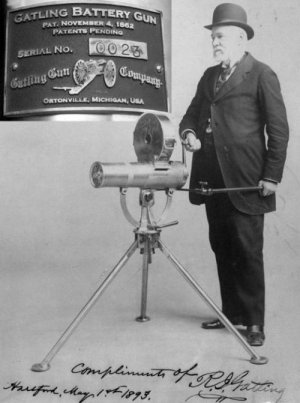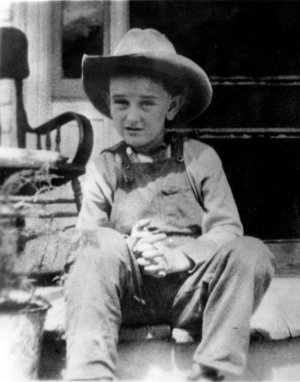You are using an out of date browser. It may not display this or other websites correctly.
You should upgrade or use an alternative browser.
You should upgrade or use an alternative browser.
History, anything goes, including pictures
- Thread starter mellowyellow
- Start date
Verisure
Senior Member
It never ends.Anzac Day

Since 1916 the anniversary of the landings at Gallipoli on 25 April 1915 has been commemorated as Anzac Day.
More: History of Anzac Day, Australian War Memorial.
Verisure
Senior Member
She doesn't look properly dressed for the occasion, as though she was out for an afternoon stroll in the summer sun and was accosted without any warning of what was to happen. A pretty dress, high-heeled shoes, make-up, lipstick, and jewelry. A real flaunt. How many french women had access to any of it in 1944? Favours provided by some Nazi officer perhaps? With that thought in mind, I just lost much of my sympathy for her.A woman is humiliated for having had personal relations with the Germans. In the Montelimar area, France, French civilians shave her head as punishment. August 29, 1944.
View attachment 161681
RnR
Member
- Location
- Gold Coast, Queensland
More details on the story ...A woman is humiliated for having had personal relations with the Germans. In the Montelimar area, France, French civilians shave her head as punishment. August 29, 1944.
View attachment 161681
https://rarehistoricalphotos.com/french-female-collaborator-punished-head-shaved-publicly-mark-1944/
Pappy
Living the Dream
In 1917, when George S. Patton was stationed in France, the mayor of a French town mistook a covered latrine pit for the grave of one of Patton’s soldiers. Patton didn’t correct the mayor, and when he visited the town during WWII, he found the locals were still respectfully maintaining the “grave.”
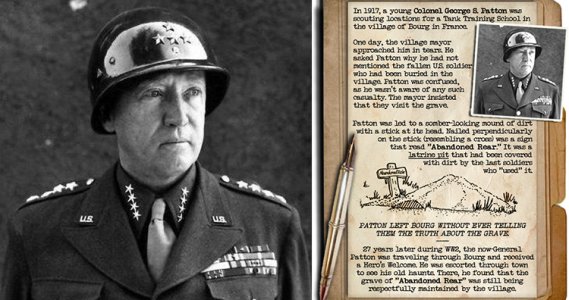
Verisure
Senior Member
Wasn't it Patton who said: "When we liberated France they loved the shit out of us!"In 1917, when George S. Patton was stationed in France, the mayor of a French town mistook a covered latrine pit for the grave of one of Patton’s soldiers. Patton didn’t correct the mayor, and when he visited the town during WWII, he found the locals were still respectfully maintaining the “grave.”
View attachment 161729
mellowyellow
Well-known Member
Verisure
Senior Member
My Lord!During the American Civil War, the Navy hired young teenagers like this, nicknamed "Powder Monkeys" to carry gunpowder from the ammunition room to the cannons. They say the "monkeys" were 12 years old. U.S.S. New Hampshire, off Charleston, South Carolina, 1864-1865. (colourized)
View attachment 161835
RnR
Member
- Location
- Gold Coast, Queensland
Great story, thanks Pappy. More to this extraordinary story at ...In 1917, when George S. Patton was stationed in France, the mayor of a French town mistook a covered latrine pit for the grave of one of Patton’s soldiers. Patton didn’t correct the mayor, and when he visited the town during WWII, he found the locals were still respectfully maintaining the “grave.”
View attachment 161729
https://www.snopes.com/fact-check/abandoned-rear/
RnR
Member
- Location
- Gold Coast, Queensland
Very evocative photo, thanks Mellowyellow. Poor kids ... apparently:During the American Civil War, the Navy hired young teenagers like this, nicknamed "Powder Monkeys" to carry gunpowder from the ammunition room to the cannons. They say the "monkeys" were 12 years old. U.S.S. New Hampshire, off Charleston, South Carolina, 1864-1865. (colourized)
View attachment 161835
"Powder monkeys" were usually boys or young teens, selected for the job for their speed and height: they were short and could move more easily in the limited space between decks and would also be hidden behind the ship's gunwale, keeping them from being shot by enemy ships' sharpshooters. The British Royal Navy first began using the term "powder monkey" in the 17th century. The United States Navy started using powder monkeys in the late 1700s. After the War of 1812 boys under the age of twelve were outlawed by the UU.S. Navy to serve on ships. However, boys above that age were still used as powder monkeys until the Spanish–American War at the end of the nineteenth century.
RnR
Member
- Location
- Gold Coast, Queensland
26 April 1890 – Australian writer A. B. "Banjo" Paterson's poem The Man from Snowy River is first published.
"The Man from Snowy River" is a poem by Australian bush poet Banjo Paterson. It was first published in The Bulletin on 26 April 1890, and was published by Angus & Robertson in October 1895, with other poems by Paterson, in The Man from Snowy River and Other Verses. The inspiration for "The Man" was claimed by Banjo himself to be not one person but a number of people.

The poem tells the story of a horseback pursuit to recapture the colt of a prizewinning racehorse that escaped from its paddock and is living with the brumbies of the mountain ranges. Eventually the brumbies descend a seemingly impassably steep slope, at which point the assembled riders give up the pursuit, except the young protagonist, who spurs his "pony" down the "terrible descent" and catches the mob.Two characters mentioned in the early part of the poem are featured in previous Paterson poems; "Clancy of the Overflow" and Harrison from "Old Pardon, Son of Reprieve".
"The Man from Snowy River" is a poem by Australian bush poet Banjo Paterson. It was first published in The Bulletin on 26 April 1890, and was published by Angus & Robertson in October 1895, with other poems by Paterson, in The Man from Snowy River and Other Verses. The inspiration for "The Man" was claimed by Banjo himself to be not one person but a number of people.

The poem tells the story of a horseback pursuit to recapture the colt of a prizewinning racehorse that escaped from its paddock and is living with the brumbies of the mountain ranges. Eventually the brumbies descend a seemingly impassably steep slope, at which point the assembled riders give up the pursuit, except the young protagonist, who spurs his "pony" down the "terrible descent" and catches the mob.Two characters mentioned in the early part of the poem are featured in previous Paterson poems; "Clancy of the Overflow" and Harrison from "Old Pardon, Son of Reprieve".
RnR
Member
- Location
- Gold Coast, Queensland
26 April 1923 – The Duke of York weds Lady Elizabeth Bowes-Lyon at Westminster Abbey.
The wedding of Prince Albert, Duke of York, and Lady Elizabeth Bowes-Lyon, later Queen Elizabeth The Queen Mother, took place on 26 April 1923 at Westminster Abbey. In an unexpected and unprecedented gesture, Elizabeth laid her bouquet at the Tomb of The Unknown Warrior on her way into the Abbey, in memory of her brother Fergus. Ever since, the bouquets of subsequent royal brides have traditionally been laid at the tomb, though after the wedding ceremony rather than before.
Wedding photos, 26 April 1923.

Prince Albert initially proposed to Elizabeth in 1921, but she turned him down, being "afraid never, never again to be free to think, speak and act as I feel I really ought to". When he declared he would marry no one else, his mother, Queen Mary, visited Glamis to see for herself the girl her son wanted to marry. She became convinced that Elizabeth was "the one girl who could make Bertie happy", but nevertheless refused to interfere. At the same time, Elizabeth was courted by James Stuart, Albert's equerry, until he left the prince's service for a better-paid job in the American oil business.
Albert's freedom in choosing Elizabeth, not a member of a royal family, though the daughter of a peer, was considered a gesture in favour of political modernisation. Previously, princes were expected to marry princesses.
The wedding of Prince Albert, Duke of York, and Lady Elizabeth Bowes-Lyon, later Queen Elizabeth The Queen Mother, took place on 26 April 1923 at Westminster Abbey. In an unexpected and unprecedented gesture, Elizabeth laid her bouquet at the Tomb of The Unknown Warrior on her way into the Abbey, in memory of her brother Fergus. Ever since, the bouquets of subsequent royal brides have traditionally been laid at the tomb, though after the wedding ceremony rather than before.
Wedding photos, 26 April 1923.

Prince Albert initially proposed to Elizabeth in 1921, but she turned him down, being "afraid never, never again to be free to think, speak and act as I feel I really ought to". When he declared he would marry no one else, his mother, Queen Mary, visited Glamis to see for herself the girl her son wanted to marry. She became convinced that Elizabeth was "the one girl who could make Bertie happy", but nevertheless refused to interfere. At the same time, Elizabeth was courted by James Stuart, Albert's equerry, until he left the prince's service for a better-paid job in the American oil business.
Albert's freedom in choosing Elizabeth, not a member of a royal family, though the daughter of a peer, was considered a gesture in favour of political modernisation. Previously, princes were expected to marry princesses.
I'm Clancy on his horse,26 April 1890 – Australian writer A. B. "Banjo" Paterson's poem The Man from Snowy River is first published.
"The Man from Snowy River" is a poem by Australian bush poet Banjo Paterson. It was first published in The Bulletin on 26 April 1890, and was published by Angus & Robertson in October 1895, with other poems by Paterson, in The Man from Snowy River and Other Verses. The inspiration for "The Man" was claimed by Banjo himself to be not one person but a number of people.

The poem tells the story of a horseback pursuit to recapture the colt of a prizewinning racehorse that escaped from its paddock and is living with the brumbies of the mountain ranges. Eventually the brumbies descend a seemingly impassably steep slope, at which point the assembled riders give up the pursuit, except the young protagonist, who spurs his "pony" down the "terrible descent" and catches the mob.Two characters mentioned in the early part of the poem are featured in previous Paterson poems; "Clancy of the Overflow" and Harrison from "Old Pardon, Son of Reprieve".
I'm Ned Kelly on the run,
I'm the one who waltzed Matilda,
I am Australian.
From the Seeker's beautiful song
mellowyellow
Well-known Member
RnR
Member
- Location
- Gold Coast, Queensland
What a record of amazing chess achievements ...View attachment 161965
Bobby Fischer playing 50 opponents simultaneously, 1964.
In this particular simultaneous exhibition, he won 47 of the matches, drew 2 and lost 1. He lost to Donn Rogosin, not a well-known player. Fischer was 21 in this picture.
https://en.wikipedia.org/wiki/Bobby_Fischer
RnR
Member
- Location
- Gold Coast, Queensland
27 April 1521 – Explorer Ferdinand Magellan is killed in the Philippines by chief Lapu-Lapu and his warriors during the Battle of Mactan.
The Battle of Mactan was fought in the Philippines at dawn on 27 April 1521, prior to Spanish colonisation. The warriors of Lapu-Lapu, a native chieftain of Mactan Island, overpowered and defeated a Spanish force fighting for Rajah Humabon of Cebu, under the command of Ferdinand Magellan, who was killed in the battle.
A mural painting depicting Lapu-Lapu vs Ferdinand Magellan at the Battle of Mactan. Lapu-Lapu shrine.

Today, Lapu-Lapu is retroactively honoured as the first "Philippine national hero" to resist foreign rule, even though the territory of the "Philippine Islands" did not exist at the time. Monuments to Lapu-Lapu have been built in Cebu and Manila, while the Philippine National Police and the Bureau of Fire Protection use his image as part of their official seals. On 27 April 2017, in honouring Lapu-Lapu as the first hero who resisted foreign rule in the country, the date April 27 when the battle happened was declared by President Rodrigo Duterte as Lapu-Lapu Day.
The Battle of Mactan was fought in the Philippines at dawn on 27 April 1521, prior to Spanish colonisation. The warriors of Lapu-Lapu, a native chieftain of Mactan Island, overpowered and defeated a Spanish force fighting for Rajah Humabon of Cebu, under the command of Ferdinand Magellan, who was killed in the battle.
A mural painting depicting Lapu-Lapu vs Ferdinand Magellan at the Battle of Mactan. Lapu-Lapu shrine.

Today, Lapu-Lapu is retroactively honoured as the first "Philippine national hero" to resist foreign rule, even though the territory of the "Philippine Islands" did not exist at the time. Monuments to Lapu-Lapu have been built in Cebu and Manila, while the Philippine National Police and the Bureau of Fire Protection use his image as part of their official seals. On 27 April 2017, in honouring Lapu-Lapu as the first hero who resisted foreign rule in the country, the date April 27 when the battle happened was declared by President Rodrigo Duterte as Lapu-Lapu Day.
RnR
Member
- Location
- Gold Coast, Queensland
27 April 1791 – Samuel Morse, American painter and co-inventor of the Morse code is born.
Samuel Finley Breese Morse (27 April 1791 – 2 April 1872) was an American painter and inventor. After having established his reputation as a portrait painter, in his middle age Morse contributed to the invention of a single-wire telegraph system based on European telegraphs. He was a co-developer of the Morse code and helped to develop the commercial use of telegraphy.
Original Samuel Morse telegraph. Morse with his recorder, photograph taken by Mathew Brady in 1857.

In 1825 Morse was in in Washington, DC to paint a portrait of Lafayette. While Morse was painting, a horse messenger delivered a letter from his father that read, "Your dear wife is convalescent". The next day he received a letter from his father detailing his wife's sudden death. Morse immediately left Washington for his home at New Haven, leaving the portrait of Lafayette unfinished. By the time he arrived, his wife had already been buried. Heartbroken that for days he was unaware of his wife's failing health and her death, he decided to explore a means of rapid long distance communication.
Samuel Finley Breese Morse (27 April 1791 – 2 April 1872) was an American painter and inventor. After having established his reputation as a portrait painter, in his middle age Morse contributed to the invention of a single-wire telegraph system based on European telegraphs. He was a co-developer of the Morse code and helped to develop the commercial use of telegraphy.
Original Samuel Morse telegraph. Morse with his recorder, photograph taken by Mathew Brady in 1857.

In 1825 Morse was in in Washington, DC to paint a portrait of Lafayette. While Morse was painting, a horse messenger delivered a letter from his father that read, "Your dear wife is convalescent". The next day he received a letter from his father detailing his wife's sudden death. Morse immediately left Washington for his home at New Haven, leaving the portrait of Lafayette unfinished. By the time he arrived, his wife had already been buried. Heartbroken that for days he was unaware of his wife's failing health and her death, he decided to explore a means of rapid long distance communication.
Verisure
Senior Member
After diner one evening in 1865 - outside of Paris - abolitionist Edouard de Laboulaye and sculptor Frederic-Auguste Bartholdi opened a discussion on the possibility of designing and sculpting a huge statue as a gift to a far-away nation that would commemorate the centennial of its independence. Designing began in 1870. Work on the monument commenced in 1876 and was completed in 1884. It was then dissembled and loaded aboard the frigate Isère and arrived on June 17, 1885. Its unveiling took place on 28 October, 1886.


RnR
Member
- Location
- Gold Coast, Queensland
Very interesting, thanks Verisure.After diner one evening in 1865 - outside of Paris - abolitionist Edouard de Laboulaye and sculptor Frederic-Auguste Bartholdi opened a discussion on the possibility of designing and sculpting a huge statue as a gift to a far-away nation that would commemorate the centennial of its independence. Designing began in 1870. Work on the monument commenced in 1876 and was completed in 1884. It was then dissembled and loaded aboard the frigate Isère and arrived on June 17, 1885. Its unveiling took place on 28 October, 1886.
View attachment 162036


mellowyellow
Well-known Member
mellowyellow
Well-known Member
mellowyellow
Well-known Member
RnR
Member
- Location
- Gold Coast, Queensland
28 April 1789 – The Mutiny on the Bounty occurs when Fletcher Christian and disaffected crewmen seize control of the ship from the captain, Lieutenant William Bligh.
Led by Acting Lieutenant Fletcher Christian, disaffected crewmen seized control of the ship from their captain, Lieutenant William Bligh, and set him and 18 loyalists adrift in the ship's open launch. The mutineers variously settled on Tahiti or on Pitcairn Island.
Fletcher Christian and the mutineers turn Lieutenant William Bligh and 18 others adrift. Painting by Robert Dodd, 1790.

Bounty had left England in 1787 on a mission to collect and transport breadfruit plants from Tahiti to the West Indies. A five-month layover in Tahiti, during which many of the men lived ashore and formed relationships with native Polynesians, proved harmful to discipline. Relations between Bligh and his crew deteriorated after he began handing out increasingly harsh punishments, criticism and abuse, Christian being a particular target. After three weeks back at sea, Christian and others forced Bligh from the ship. Twenty-five men remained on board afterwards, including loyalists held against their will and others for whom there was no room in the launch.
Bligh meanwhile completed a voyage of more than 6,500 kilometres in the launch to reach safety, and began the process of bringing the mutineers to justice. Bligh reached England in April 1790, whereupon the Admiralty despatched HMS Pandora to apprehend the mutineers. Fourteen were captured in Tahiti and imprisoned on board Pandora, which then searched without success for Christian's party that had hidden on Pitcairn Island.
William Bligh, pictured in his account of the mutiny voyage, A Voyage to the South Sea, 1792. “Fletcher Christian. Aged 24 years – 5.9 High. Dark swarthy complexion…” The beginning of Bligh's list of mutineers, written during the open-boat voyage. National Library of Australia.

After turning back toward England, Pandora ran aground on the Great Barrier Reef, with the loss of 31 crew and 4 prisoners from Bounty. The 10 surviving detainees reached England in June 1792 and were court-martialled; 4 were acquitted, 3 were pardoned, and 3 were hanged.
Christian's group remained undiscovered on Pitcairn until 1808, by which time only one mutineer, John Adams, remained alive. Almost all his fellow mutineers, including Christian, and their male Polynesian companions, had killed each other over time in varying conflicts. The only survivors of these conflicts were Adams and Ned Young, who had subsequently died of asthma in 1800. No action was taken against Adams. Descendants of the mutineers and their Tahitian consorts still live on Pitcairn and Norfolk Island.
Led by Acting Lieutenant Fletcher Christian, disaffected crewmen seized control of the ship from their captain, Lieutenant William Bligh, and set him and 18 loyalists adrift in the ship's open launch. The mutineers variously settled on Tahiti or on Pitcairn Island.
Fletcher Christian and the mutineers turn Lieutenant William Bligh and 18 others adrift. Painting by Robert Dodd, 1790.

Bounty had left England in 1787 on a mission to collect and transport breadfruit plants from Tahiti to the West Indies. A five-month layover in Tahiti, during which many of the men lived ashore and formed relationships with native Polynesians, proved harmful to discipline. Relations between Bligh and his crew deteriorated after he began handing out increasingly harsh punishments, criticism and abuse, Christian being a particular target. After three weeks back at sea, Christian and others forced Bligh from the ship. Twenty-five men remained on board afterwards, including loyalists held against their will and others for whom there was no room in the launch.
Bligh meanwhile completed a voyage of more than 6,500 kilometres in the launch to reach safety, and began the process of bringing the mutineers to justice. Bligh reached England in April 1790, whereupon the Admiralty despatched HMS Pandora to apprehend the mutineers. Fourteen were captured in Tahiti and imprisoned on board Pandora, which then searched without success for Christian's party that had hidden on Pitcairn Island.
William Bligh, pictured in his account of the mutiny voyage, A Voyage to the South Sea, 1792. “Fletcher Christian. Aged 24 years – 5.9 High. Dark swarthy complexion…” The beginning of Bligh's list of mutineers, written during the open-boat voyage. National Library of Australia.

After turning back toward England, Pandora ran aground on the Great Barrier Reef, with the loss of 31 crew and 4 prisoners from Bounty. The 10 surviving detainees reached England in June 1792 and were court-martialled; 4 were acquitted, 3 were pardoned, and 3 were hanged.
Christian's group remained undiscovered on Pitcairn until 1808, by which time only one mutineer, John Adams, remained alive. Almost all his fellow mutineers, including Christian, and their male Polynesian companions, had killed each other over time in varying conflicts. The only survivors of these conflicts were Adams and Ned Young, who had subsequently died of asthma in 1800. No action was taken against Adams. Descendants of the mutineers and their Tahitian consorts still live on Pitcairn and Norfolk Island.
RnR
Member
- Location
- Gold Coast, Queensland
28 April 1996 – In a shooting spree, 35 people are murdered by Martin Bryant in Port Arthur, Tasmania.
The Port Arthur massacre of 28–29 April 1996 was a mass shooting in which 35 people were killed and 23 wounded in Port Arthur. The murderer Martin Bryant had a subnormal IQ and intellectual disabilities. He pleaded guilty for the incident and was given 35 life sentences without possibility of parole.
On 28 April 1996, Bryant drove to the Seascape Cottage, a bed and breakfast property that his father had once tried to purchase. Police believe that it was at this point that Bryant killed the owners. He then drove to the historic site of Port Arthur. After eating at the café, he pulled a semiautomatic rifle out of a duffel bag and began shooting. Within approximately two minutes, 20 people were dead. He continued his killing spree as he escaped in his car.
Yellow Volvo used by Martin Bryant. Inset: Martin Bryant at the time.

He later stole another vehicle after killing its occupants at a toll booth, and he stopped at a service station, where he fatally shot a woman and took a hostage. Bryant then returned to the Seascape Cottage. Once police arrived, they surrounded the inn and tried unsuccessfully to negotiate with Bryant, who shot at them. On the morning of April 29 he set the building on fire and was apprehended when he fled. Investigators later found three bodies inside.
The Port Arthur massacre was the worst mass murder in Australian history. Fundamental changes of gun control laws within Australia followed the incident. The case is regarded to be amongst the most notable massacres in history.
The Port Arthur massacre of 28–29 April 1996 was a mass shooting in which 35 people were killed and 23 wounded in Port Arthur. The murderer Martin Bryant had a subnormal IQ and intellectual disabilities. He pleaded guilty for the incident and was given 35 life sentences without possibility of parole.
On 28 April 1996, Bryant drove to the Seascape Cottage, a bed and breakfast property that his father had once tried to purchase. Police believe that it was at this point that Bryant killed the owners. He then drove to the historic site of Port Arthur. After eating at the café, he pulled a semiautomatic rifle out of a duffel bag and began shooting. Within approximately two minutes, 20 people were dead. He continued his killing spree as he escaped in his car.
Yellow Volvo used by Martin Bryant. Inset: Martin Bryant at the time.

He later stole another vehicle after killing its occupants at a toll booth, and he stopped at a service station, where he fatally shot a woman and took a hostage. Bryant then returned to the Seascape Cottage. Once police arrived, they surrounded the inn and tried unsuccessfully to negotiate with Bryant, who shot at them. On the morning of April 29 he set the building on fire and was apprehended when he fled. Investigators later found three bodies inside.
The Port Arthur massacre was the worst mass murder in Australian history. Fundamental changes of gun control laws within Australia followed the incident. The case is regarded to be amongst the most notable massacres in history.
Verisure
Senior Member
A story that never diminishes in intrigue.28 April 1789 – The Mutiny on the Bounty occurs when Fletcher Christian and disaffected crewmen seize control of the ship from the captain, Lieutenant William Bligh.
Led by Acting Lieutenant Fletcher Christian, disaffected crewmen seized control of the ship from their captain, Lieutenant William Bligh, and set him and 18 loyalists adrift in the ship's open launch. The mutineers variously settled on Tahiti or on Pitcairn Island.
Fletcher Christian and the mutineers turn Lieutenant William Bligh and 18 others adrift. Painting by Robert Dodd, 1790.

Bounty had left England in 1787 on a mission to collect and transport breadfruit plants from Tahiti to the West Indies. A five-month layover in Tahiti, during which many of the men lived ashore and formed relationships with native Polynesians, proved harmful to discipline. Relations between Bligh and his crew deteriorated after he began handing out increasingly harsh punishments, criticism and abuse, Christian being a particular target. After three weeks back at sea, Christian and others forced Bligh from the ship. Twenty-five men remained on board afterwards, including loyalists held against their will and others for whom there was no room in the launch.
Bligh meanwhile completed a voyage of more than 6,500 kilometres in the launch to reach safety, and began the process of bringing the mutineers to justice. Bligh reached England in April 1790, whereupon the Admiralty despatched HMS Pandora to apprehend the mutineers. Fourteen were captured in Tahiti and imprisoned on board Pandora, which then searched without success for Christian's party that had hidden on Pitcairn Island.
William Bligh, pictured in his account of the mutiny voyage, A Voyage to the South Sea, 1792. “Fletcher Christian. Aged 24 years – 5.9 High. Dark swarthy complexion…” The beginning of Bligh's list of mutineers, written during the open-boat voyage. National Library of Australia.

After turning back toward England, Pandora ran aground on the Great Barrier Reef, with the loss of 31 crew and 4 prisoners from Bounty. The 10 surviving detainees reached England in June 1792 and were court-martialled; 4 were acquitted, 3 were pardoned, and 3 were hanged.
Christian's group remained undiscovered on Pitcairn until 1808, by which time only one mutineer, John Adams, remained alive. Almost all his fellow mutineers, including Christian, and their male Polynesian companions, had killed each other over time in varying conflicts. The only survivors of these conflicts were Adams and Ned Young, who had subsequently died of asthma in 1800. No action was taken against Adams. Descendants of the mutineers and their Tahitian consorts still live on Pitcairn and Norfolk Island.



